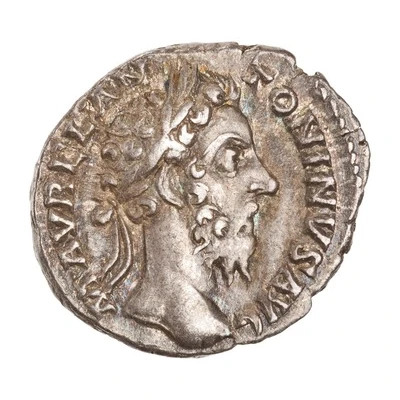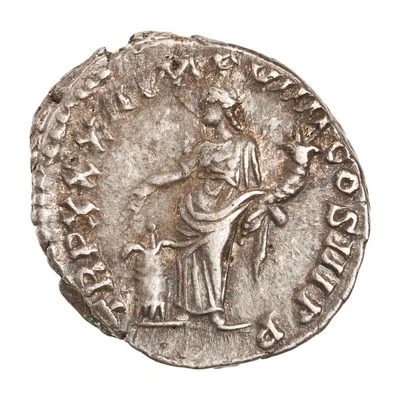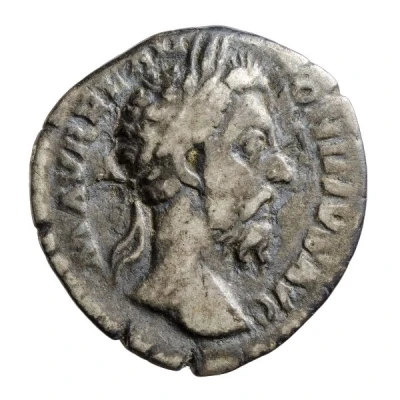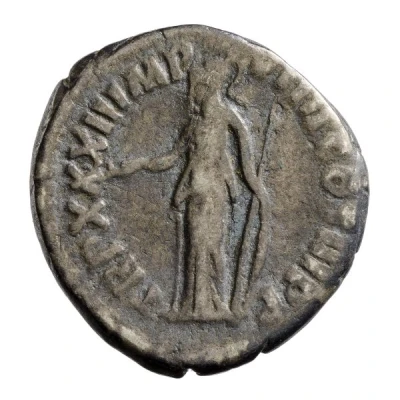


© American Numismatic Society (ANS)
Denarius - Marcus Aurelius TR P XXXII IMP VIIII COS III P P; Annona
| Silver | 3.1 g | 17.5 mm |
| Issuer | Rome › Roman Empire (27 BC - 395 AD) |
|---|---|
| Emperor | Marcus Aurelius (Marcus Aurelius Antoninus) (161-180) |
| Type | Standard circulation coin |
| Years | 177-178 |
| Value | 1 Denarius |
| Currency | Denarius, Reform of Augustus (27 BC – AD 215) |
| Composition | Silver |
| Weight | 3.1 g |
| Diameter | 17.5 mm |
| Shape | Round (irregular) |
| Technique | Hammered |
| Demonetized | Yes |
| Updated | 2024-10-05 |
| Numista | N#263060 |
|---|---|
| Rarity index | 97% |
Reverse
Annona, draped, standing left, holding corn-ears in right hand and cornucopiae in left hand; at feet, modius at left and ship at right.
Script: Latin
Lettering: TR P XXXII IMP VIIII COS III P P
Translation:
Tribunicia Potestate Secunda Tricesima, Imperator Nonum, Consul Tertium, Pater Patriae.
Holder of tribunician power for the 32nd time, supreme commander (Imperator) for the ninth time, consul for the third time, father of the nation.
Comment
Mass varies: 2.93–3.39 g;Diameter varies: 16.5–18 mm;
Example of this type:
American Numismatic Society (ANS)
Source:
Online Coins of the Roman Empire (OCRE)
Interesting fact
The Denarius coin featuring Marcus Aurelius, which was minted between 177-178 AD, is considered to be one of the most well-preserved examples of Roman coinage from that time period. Its excellent state of preservation is likely due to the fact that it was minted using a new technique that was introduced during Marcus Aurelius' reign, which involved striking the coins multiple times to create a more detailed and precise image. This technique, known as "multiple striking," allowed for the production of coins with a higher level of detail and precision than was previously possible, resulting in coins that were not only aesthetically pleasing but also highly durable. As a result, many of these coins have survived in excellent condition to this day, providing a valuable window into the economic and cultural practices of the Roman Empire during the 2nd century AD.

